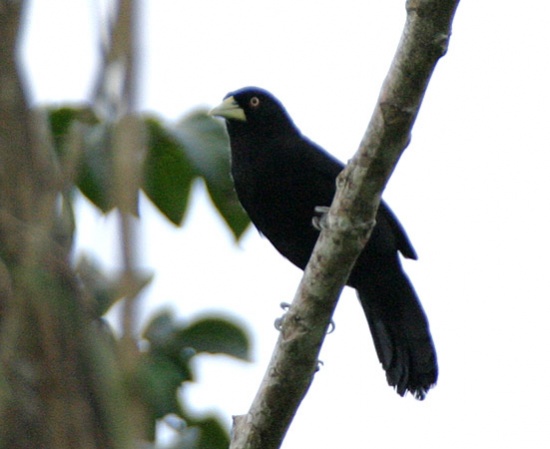- Amblycercus holosericeus
Identification
Male 21·5 cm; female 20·5 cm
All black with pale yellow bill and eye, long broad tail
Distribution
Central and South America
Central America: found in Mexico, Guatemala, Belize, El Salvador, Honduras, Nicaragua, Costa Rica and Panama
South America: Colombia, Venezuela, Ecuador, Peru an Bolivia
Taxonomy
Subspecies
There are 3 subspecies[1]:
- A. h. holosericeus:
- A. h. flavirostris:
- A. h. australis:
Habitat
Dense thickets, bamboo stands and undergrowth of clearings and forest edges. Often seen near streams.
Behaviour
A skulking bird, hard to see in the thickets.
Diet
Their diet consists almost entirely of insects, including beetles and crickets.
Breeding
Monogomous. They build a bulky cup nest of leaves and vines. The clutch consists of 1–2 eggs.
References
- Clements, J. F., T. S. Schulenberg, M. J. Iliff, D. Roberson, T. A. Fredericks, B. L. Sullivan, and C. L. Wood. 2014. The eBird/Clements checklist of birds of the world: Version 6.9., with updates to August 2014. Downloaded from http://www.birds.cornell.edu/clementschecklist/download/
- Avibase
- Handbook of the Birds of the World Alive (retrieved December 2014)
- Neotropical.birds.cornell.edu
Recommended Citation
- BirdForum Opus contributors. (2025) Yellow-billed Cacique. In: BirdForum, the forum for wild birds and birding. Retrieved 18 May 2025 from https://www.birdforum.net/opus/Yellow-billed_Cacique




